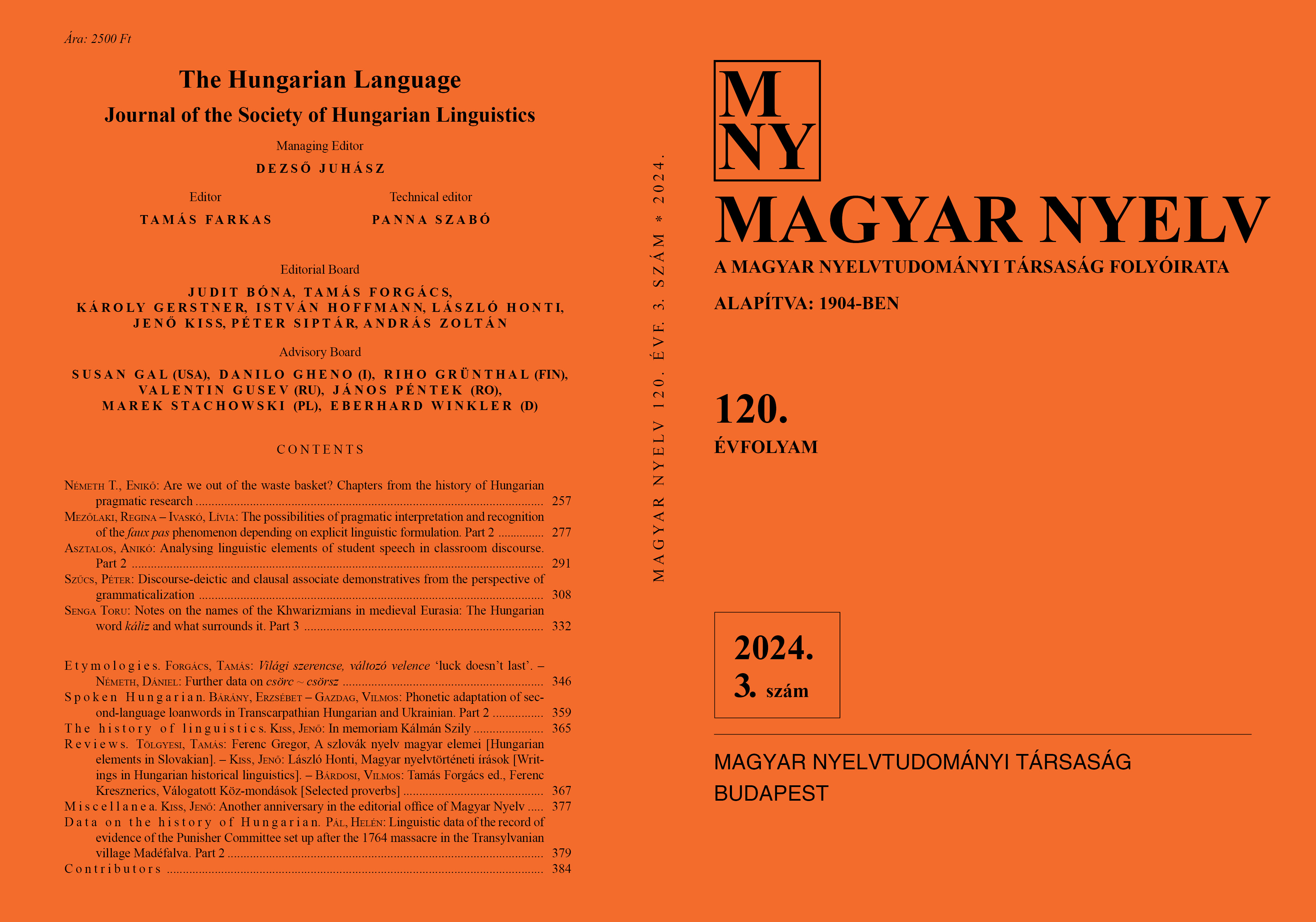The possibilities of pragmatic interpretation and recognition of the faux pas phenomenon depending on explicit linguistic formulation
Part 2
DOI:
https://doi.org/10.18349/MagyarNyelv.2024.3.277Keywords:
faux pas, intentions, mental attribution, explicitness, faceworkAbstract
Faux pas (Stone et al. 1998; Varga et al. 2008; Gál 2016) is a conversational blunder with unpleasant consequences, committed by the communicator based on a false belief without offensive intent. Recognizing the commission of a blunder requires complex cognitive processes, so both the linguistic phenomenon itself and its interpretation provide an exciting research area for the frontier areas of psychology and pragmatics. In this study, we present what the toolset of socio- and cognitive pragmatics can contribute to the investigation of this issue. During the analysis of the empirical data, we worked with the sets of concepts of face, facework (Goffman [1955] 2008), rationality and interpersonal principles (Nemesi 2016), and the relevance theoretical framework (Sperber–Wilson [1986] 1995; Ivaskó 2000; 2005). Based on the results of our research, it can be said that socio- and cognitive-pragmatic investigations help us differentiate among linguistic phenomena related to the umbrella term of faux pas and gain a more thorough understanding of the inferential and metapragmatic processes behind their recognition and interpretation.
Downloads
Published
Issue
Section
License
Copyright (c) 2024 Regina Mezőlaki , Lívia Ivaskó

This work is licensed under a Creative Commons Attribution-NonCommercial-NoDerivatives 4.0 International License.
Magyar Nyelv is a Diamond Open Access periodical. Documents can be freely downloaded and duplicated in an electronic format, and can be used unchanged and with due reference to the original source. Such use must not serve commercial purposes. In the case of any form of dissemination and use, Hungarian Copyright Act LXXVI/1999 and related laws are to be observed. The electronic version of the journal is subject to the regulations of CC BY-NC-ND (Creative Commons – Attribution-NonCommercial-NoDerivatives).
The journal permits its authors, at no cost and without any temporal limitation, to make pre-print copies of their manuscripts publicly available via email or in their own homepage or that of their institution, or in either closed or free-for-all repositories of their institutions/universities, or other non-profit websites, in the form accepted by the journal editor for publication and even containing amendments on the basis of reviewers’ comments. When the authors publicize their papers in this manner, they have to warn their readers that the manuscript at hand is not the final published version of the work. Once the paper has been published in a printed or online form, the authors are allowed (and advised) to use that (post-print) version for the above purposes. In that case, they have to indicate the exact location and other data of the journal publication. The authors retain the copyright of their papers; however, in the case of an occasional secondary publication, the bibliographical data of the first publication have to be included.



